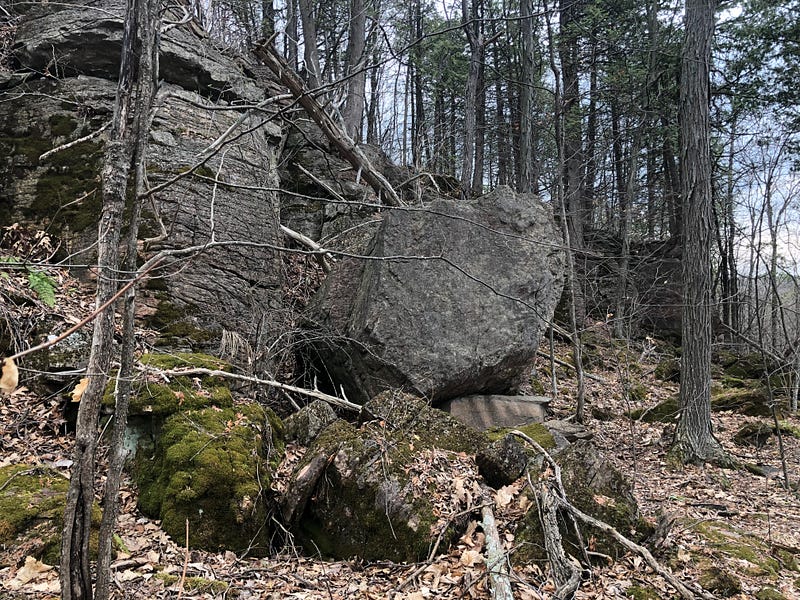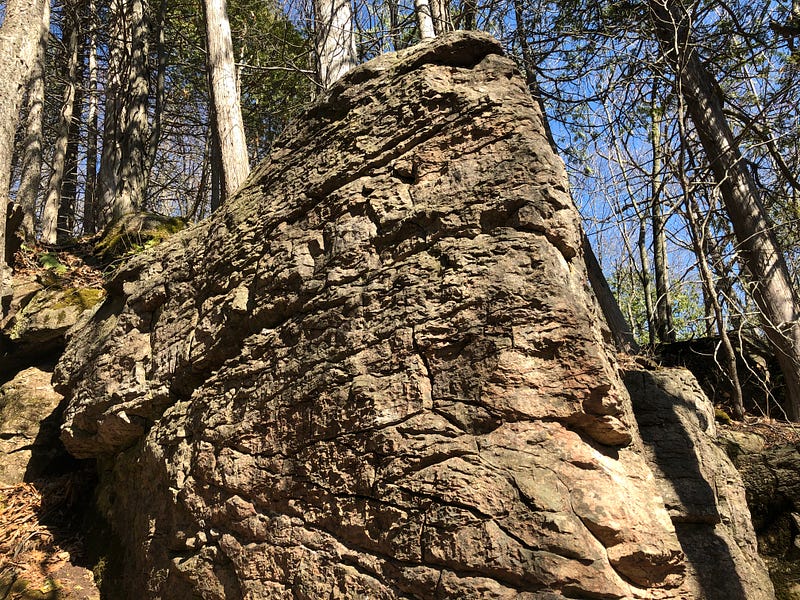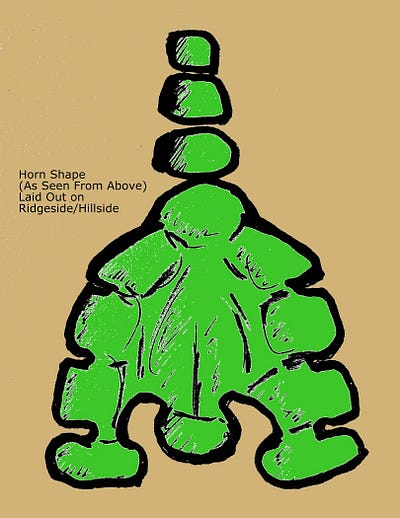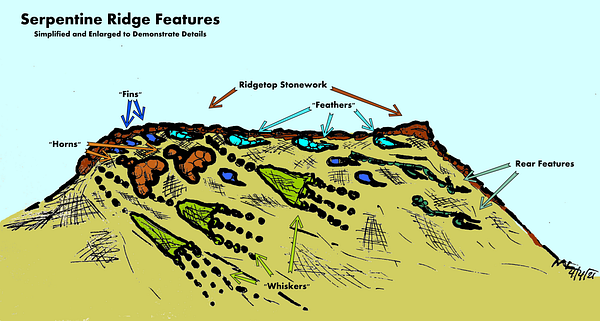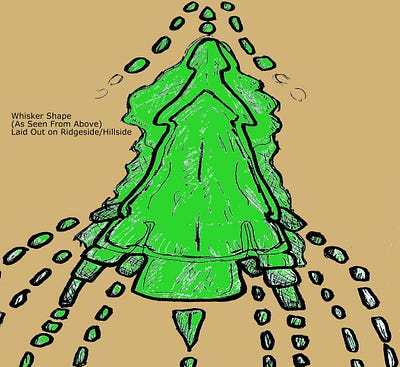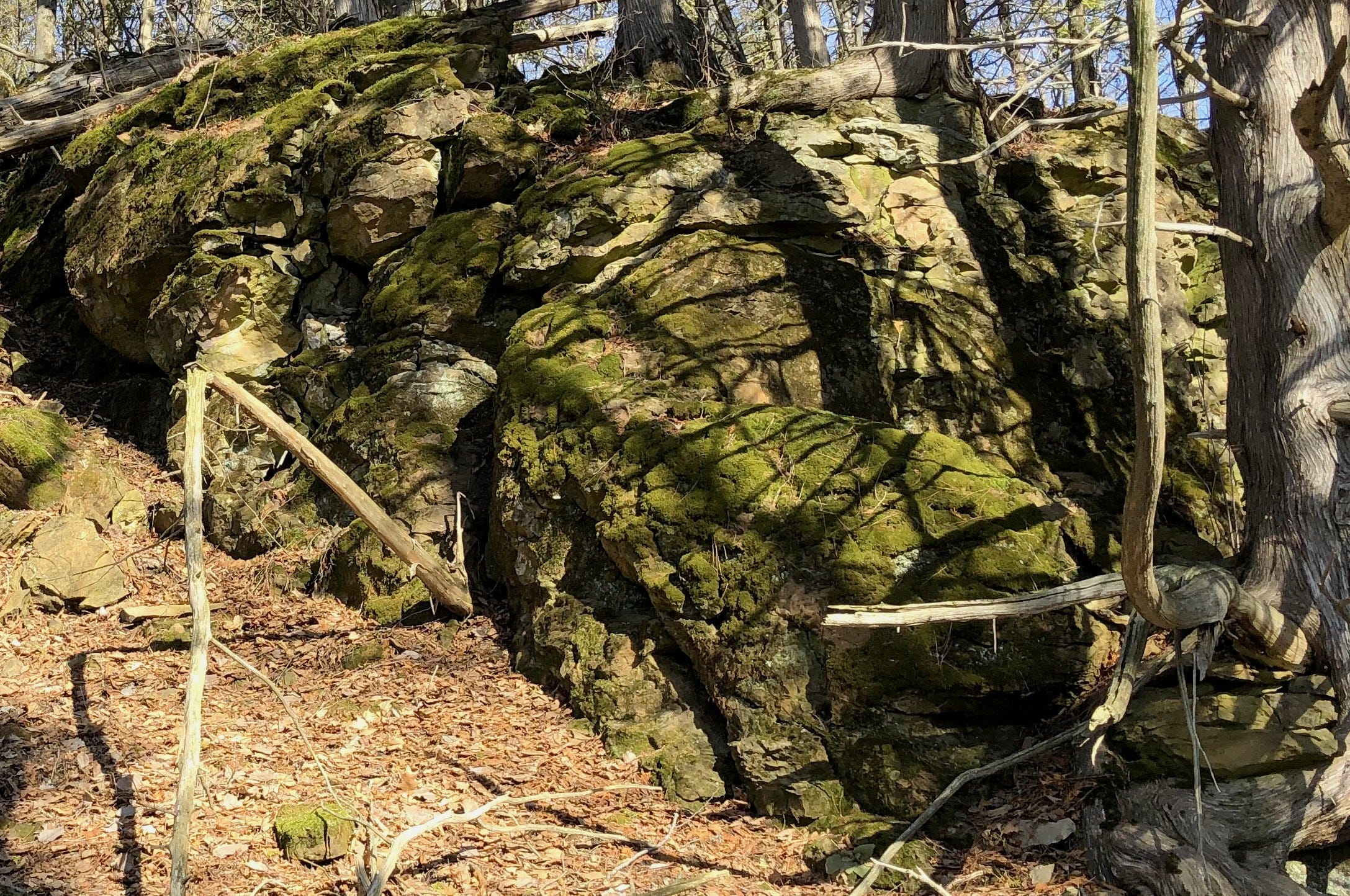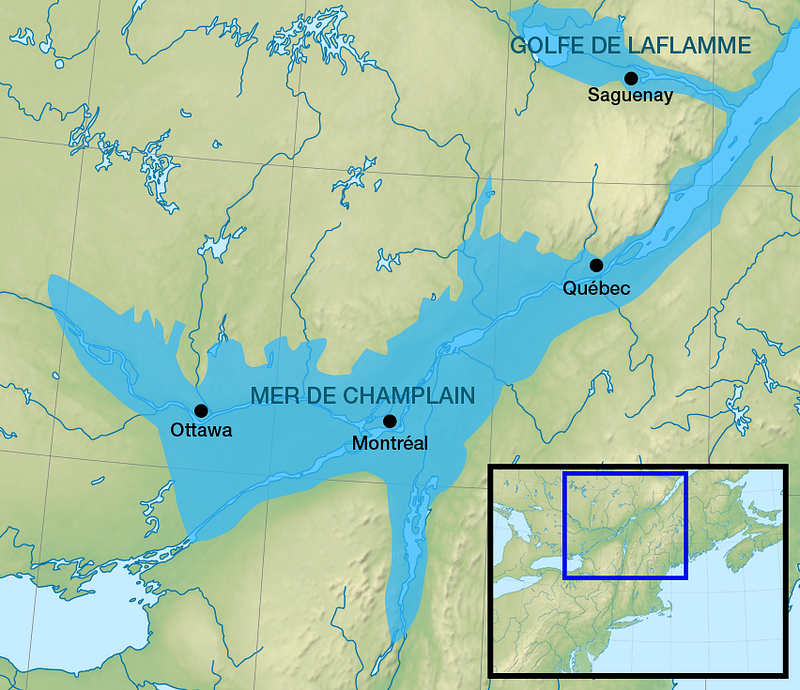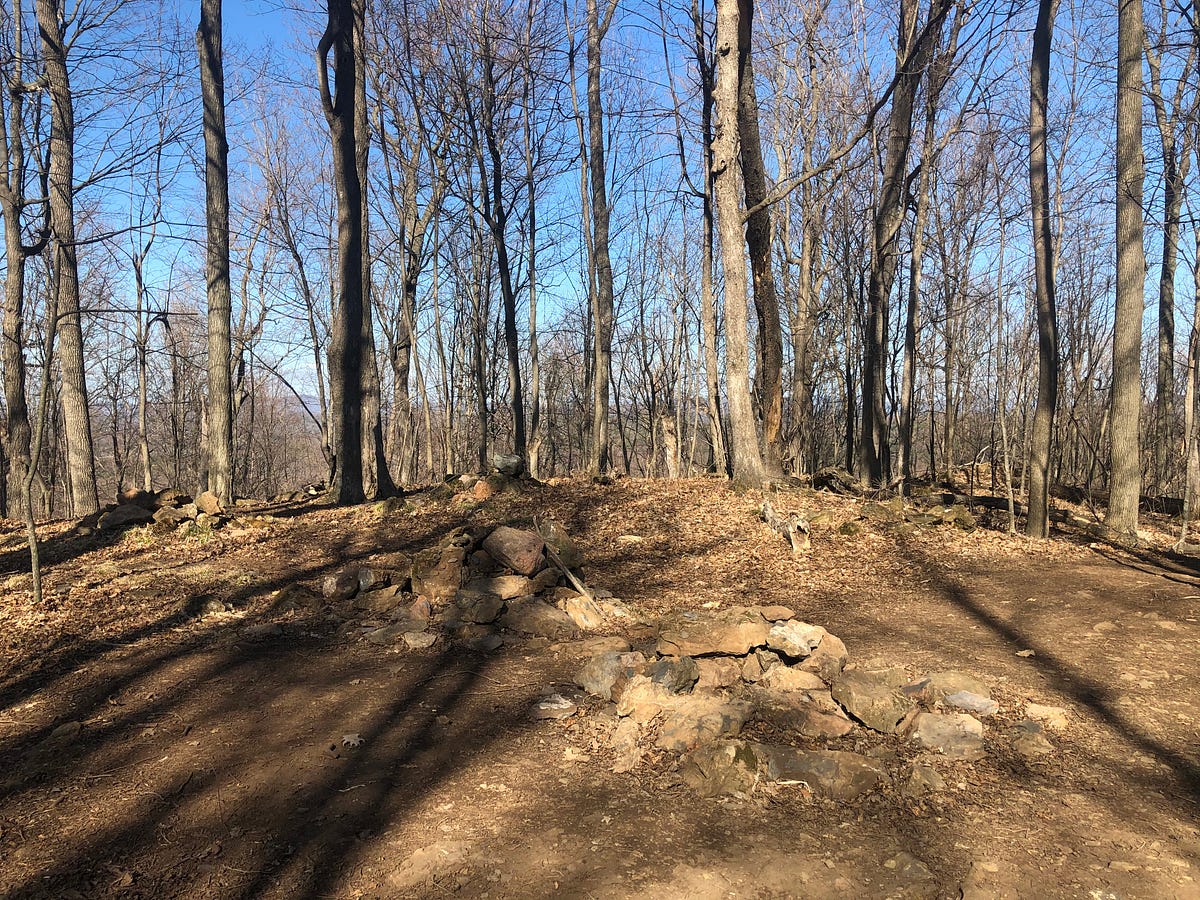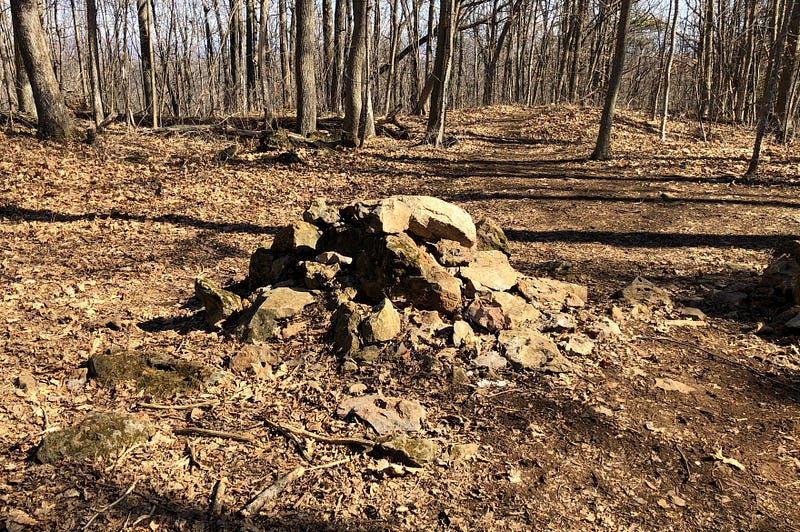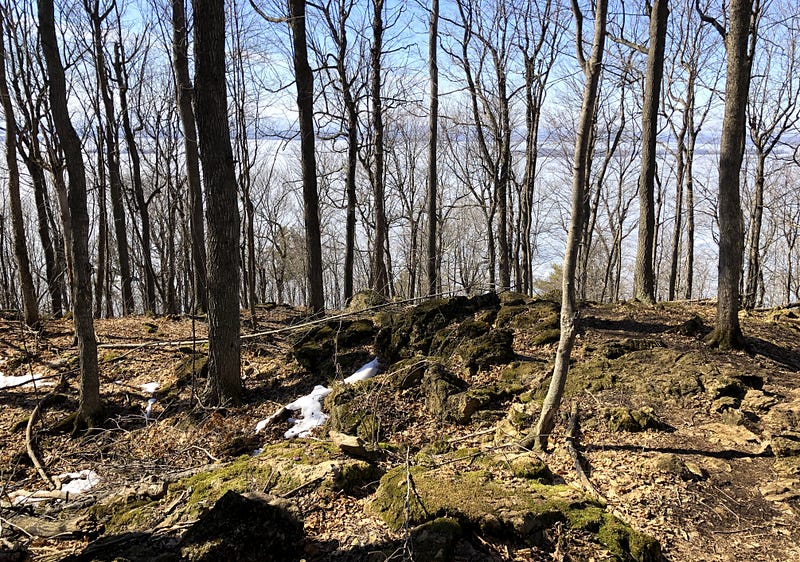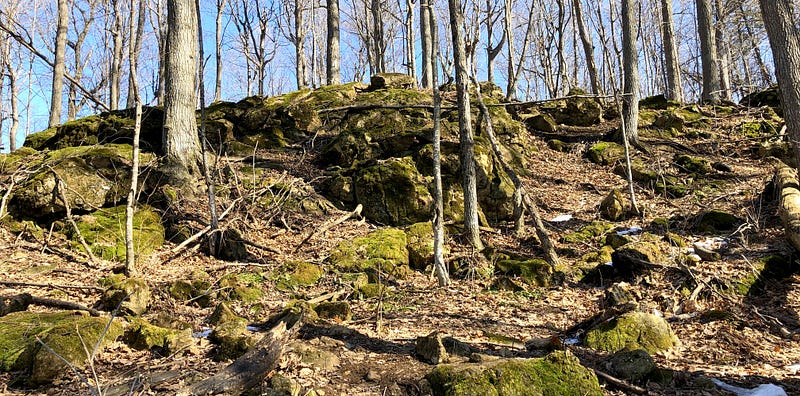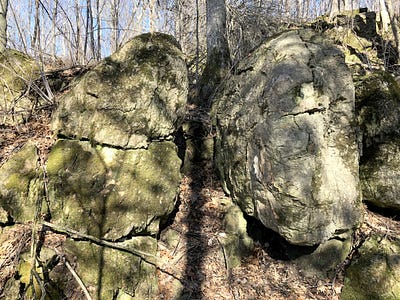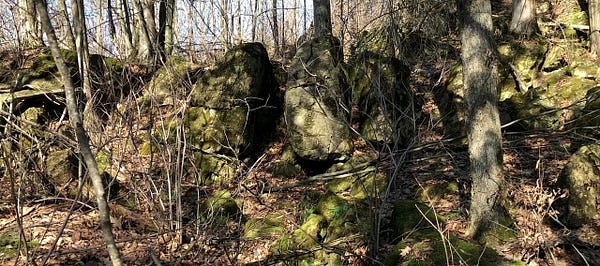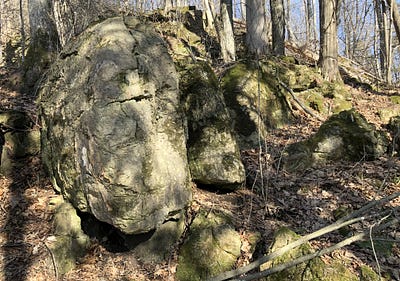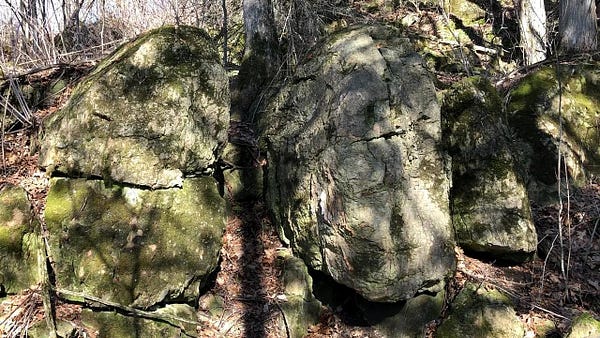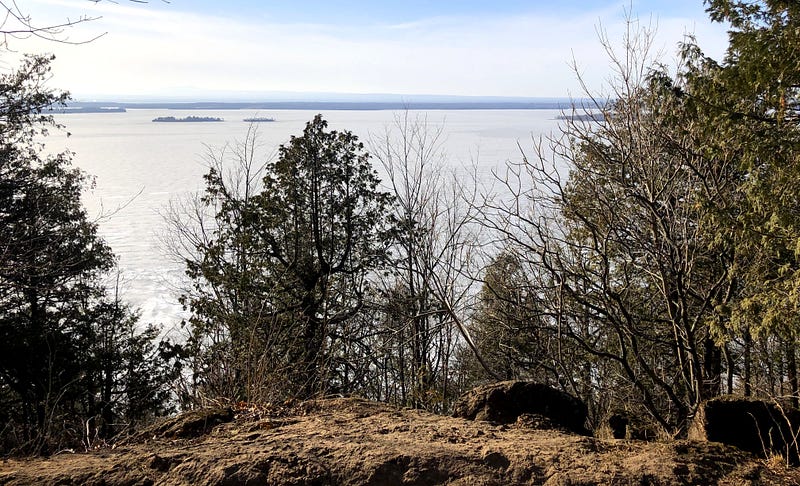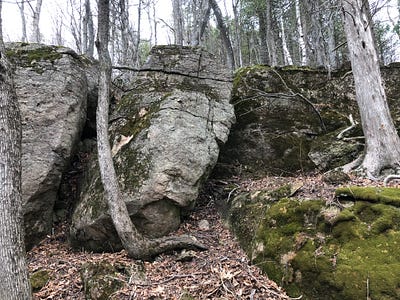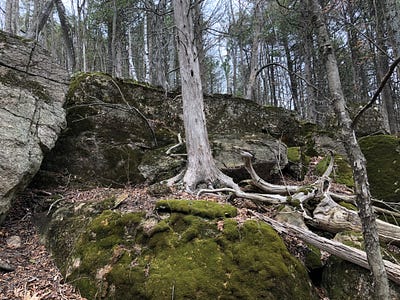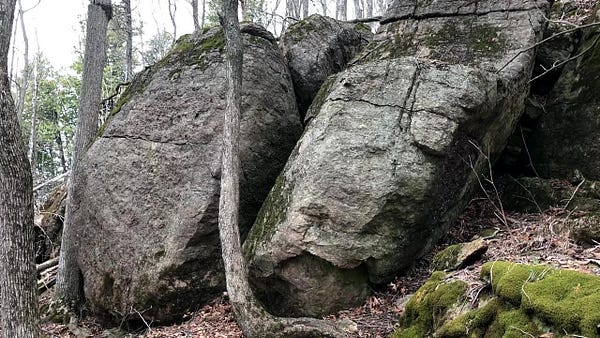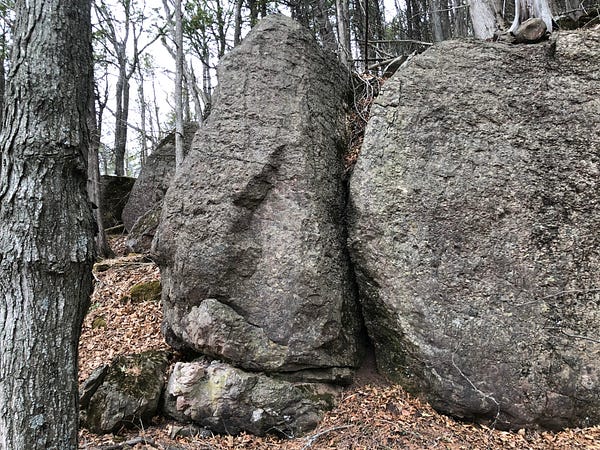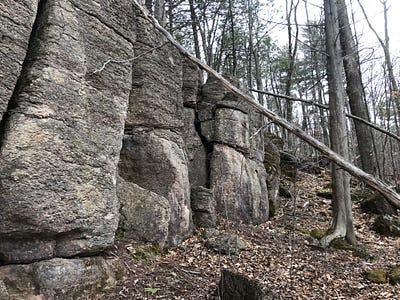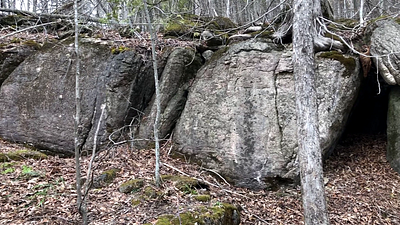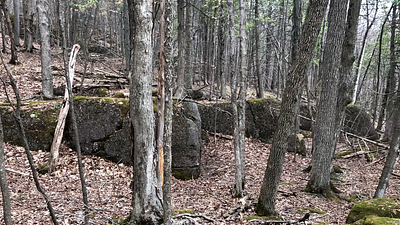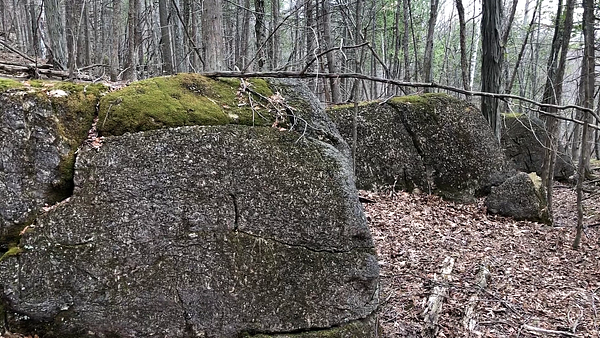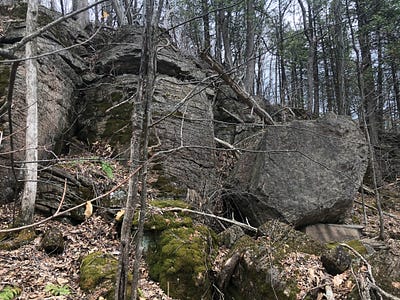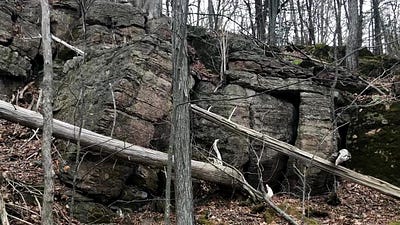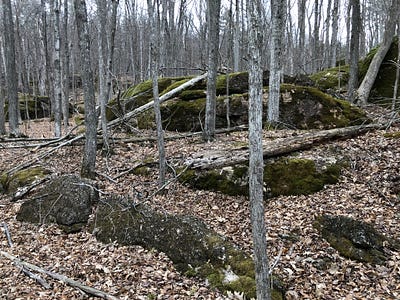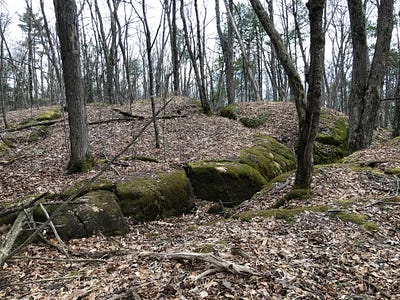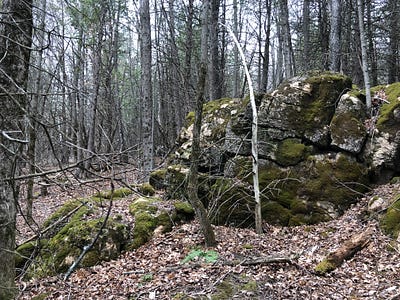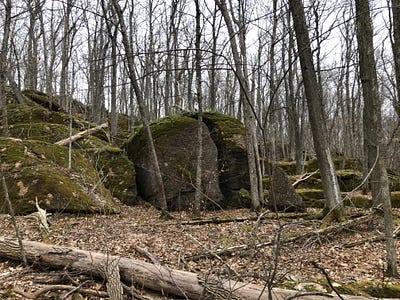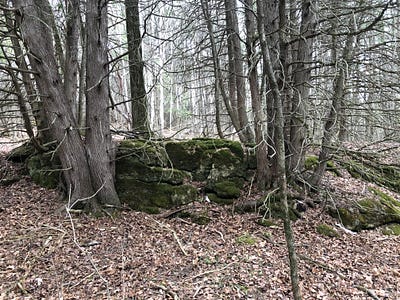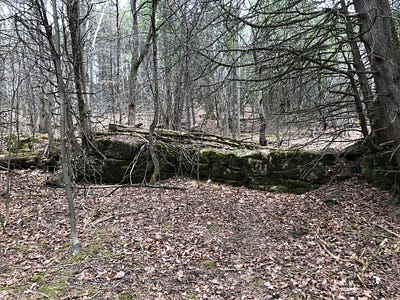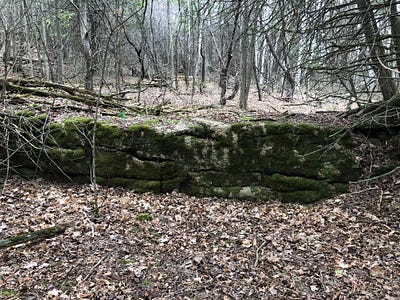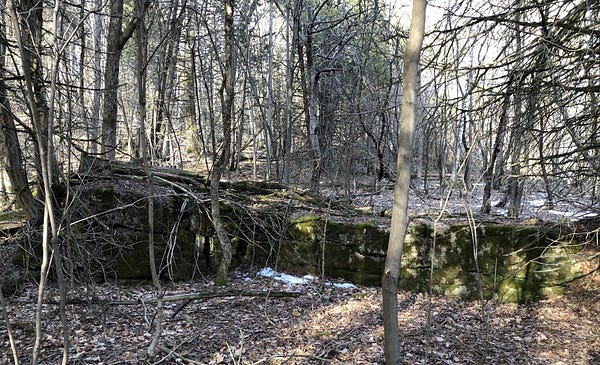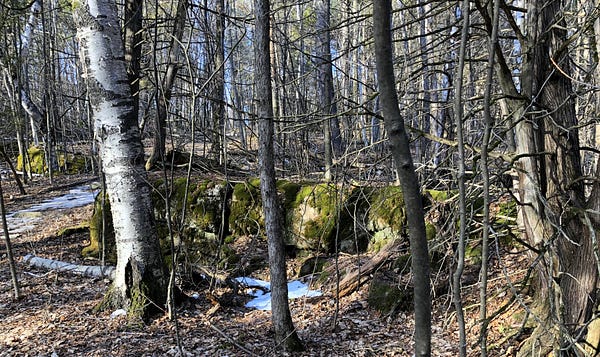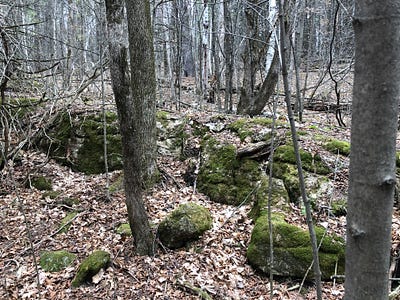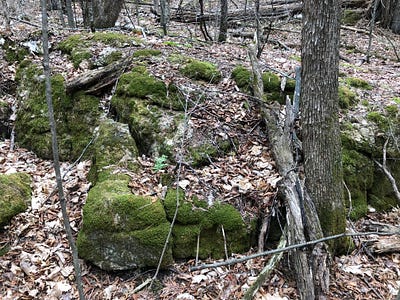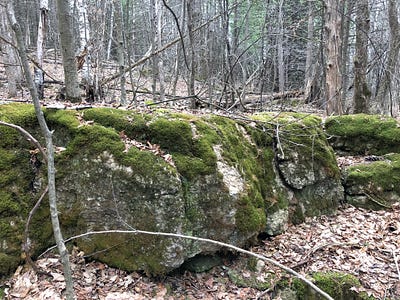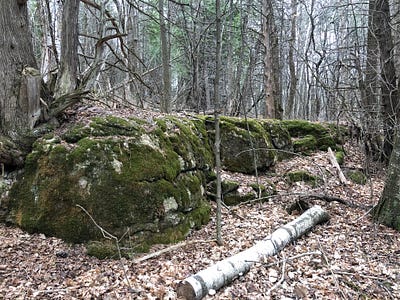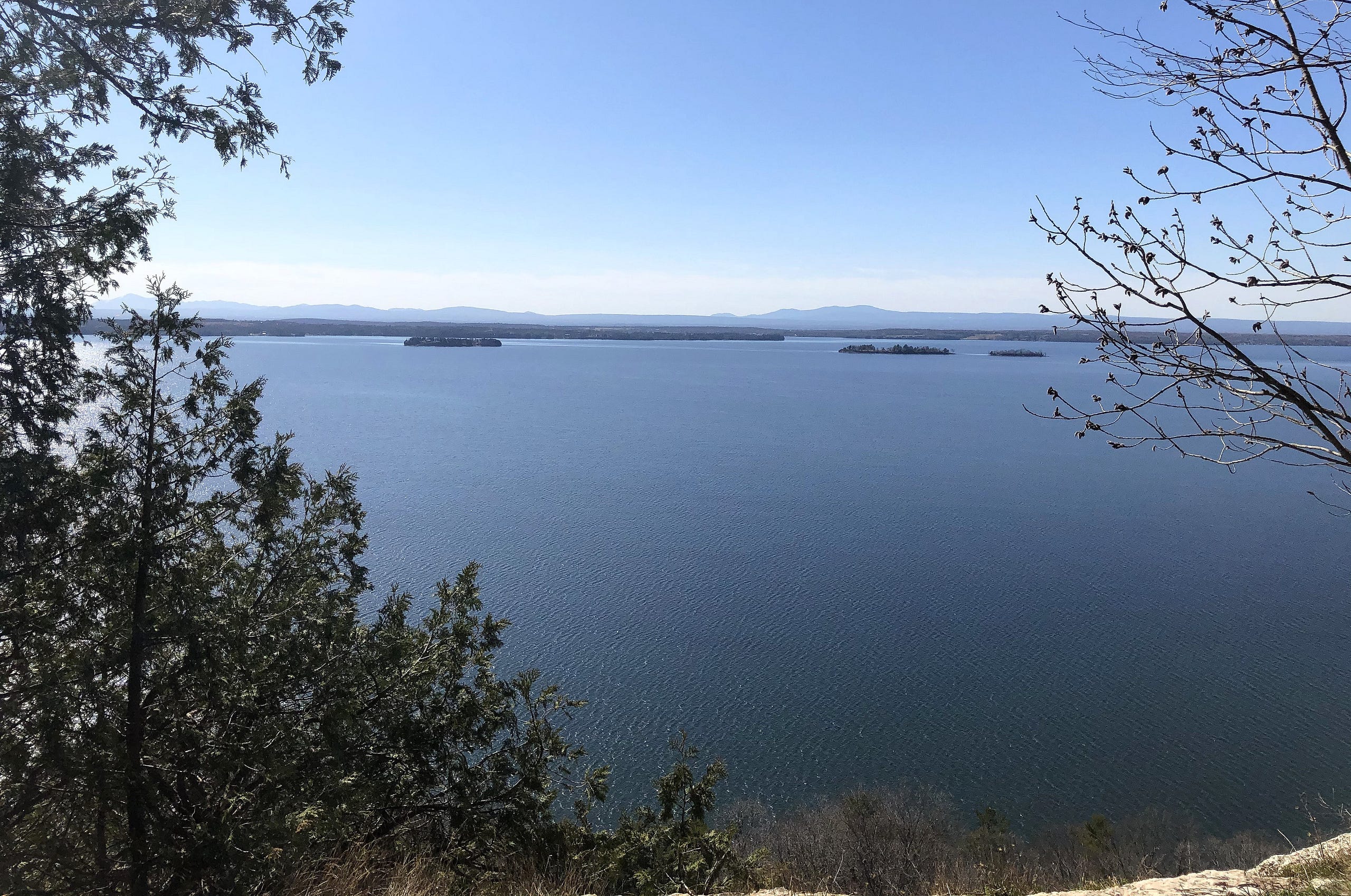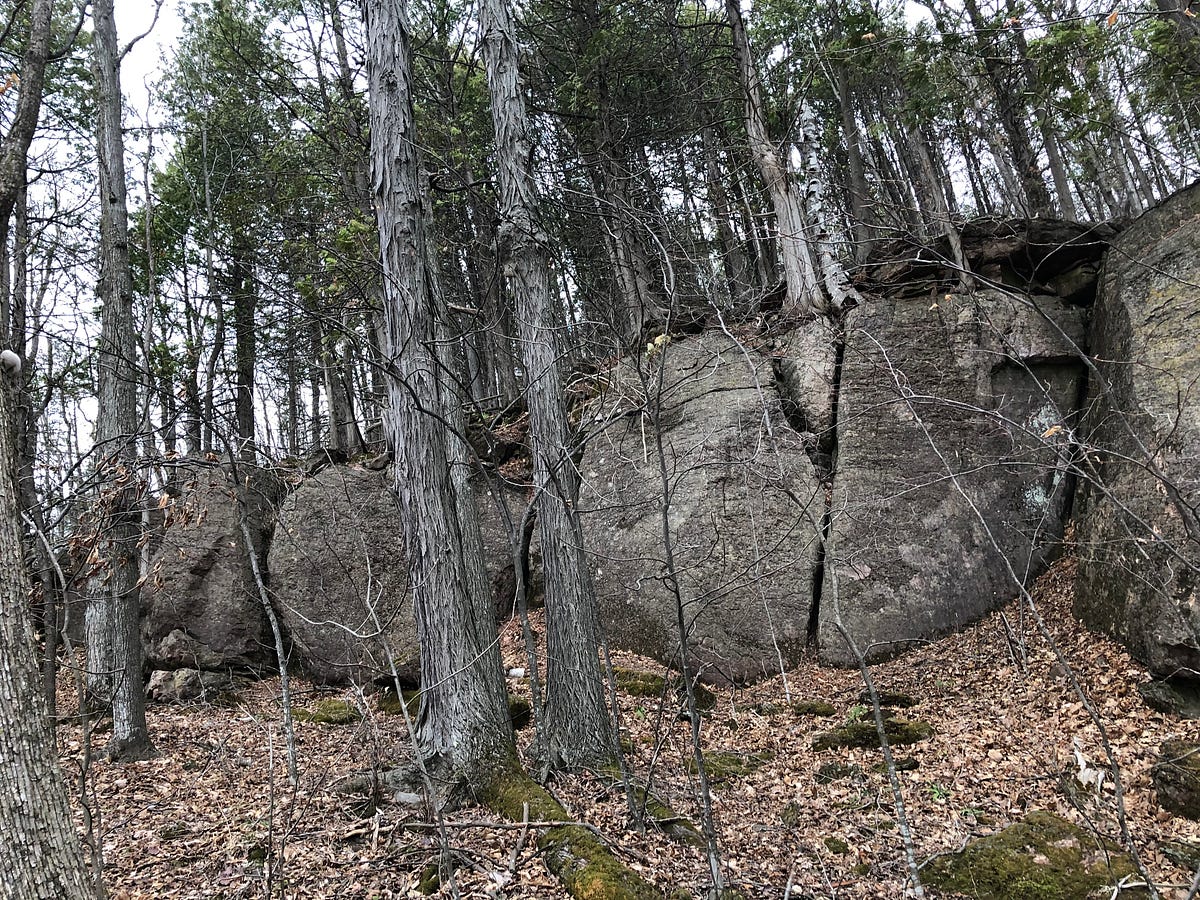A Machu Picchu in Vermont?
Exploring A Possible Mountaintop Discovery in Northeastern North America
Exploring A Possible Mountaintop Discovery in Northeastern North America

Hiram Bingham, the Third!
Fresh home from first exploring Eagle Mountain in Milton, Vermont, I looked up Bingham.
Actually, I didn’t know yet exactly who he was. I was looking up what he did. For Hiram Bingham revealed famed Machu Picchu to the world back in 1911.
Why would I wonder who found Machu Picchu?
Well…
We’re inclined to believe it takes bushwhacking through the jungles of Southern Peru to discover amazing, undiscovered ancient wonders on mountain tops. But what if such a wonder sits here in our midst in North America, undiscovered?
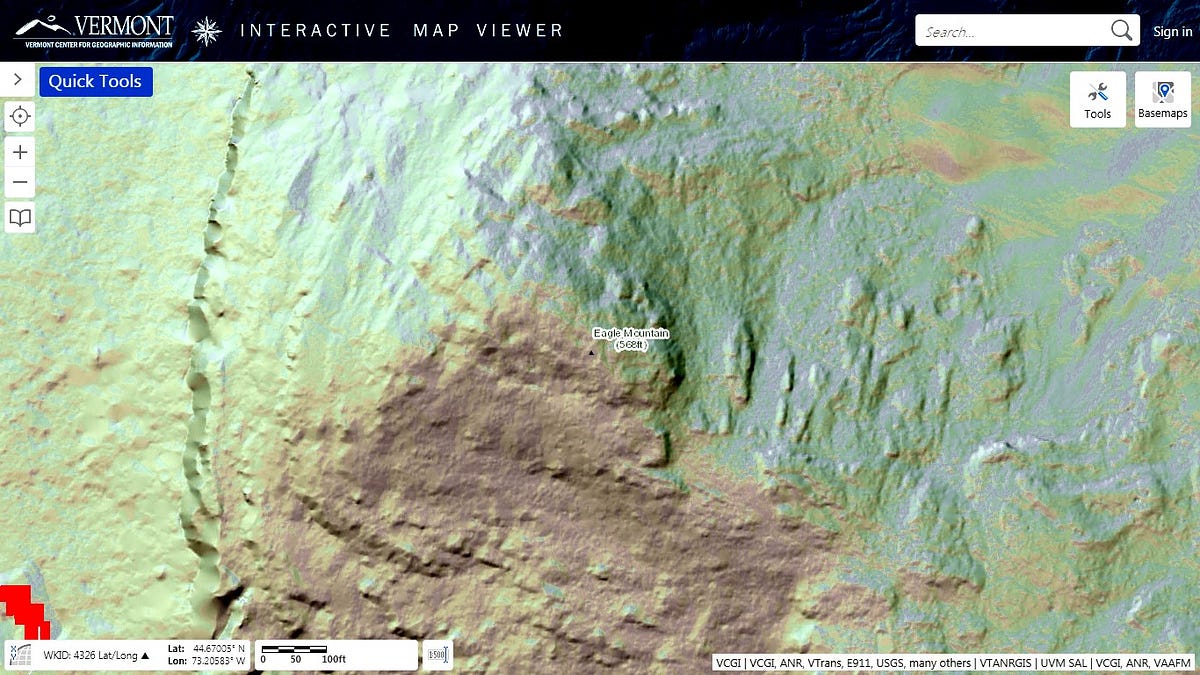
A Machu Picchu in Vermont?
The remains of the past are often hidden in plain sight all around us. We don’t see them. Our minds tend to disregard the unusual, and cultural blindness renders much invisible.
What I’ve seen on Eagle Mountain in northern Vermont is big both physically and, potentially, in terms of its impacts on history and culture. It is rather amazing something this huge has remained unseen for so long.
Although, Vermont does have a history of ignoring its past — for over a century, the idea no Native Americans ever lived in Vermont prevailed statewide, despite historical documentation to the contrary.
This falsehood was even taught in Vermont schools into the 1970's, reinforced by the racist idea — without historical basis — that the area had been some kind of “happy hunting ground” shared by many tribes, who merely passed through. These days, you can still find folks in their 40s-50s who grew up and were taught this. And some still believe it.
This falsehood not only erased the indigenous peoples from the historical landscape, it also conveniently negated any physical claims to the land. Settlers could build where they liked — it was “God’s Country”, no one else’s.
You wouldn’t expect to find anything left over from the past if this had been a pristine wilderness, with hunter gatherers simply “passing through”. It might make it easy to ignore something even this massive.
Now, I did have to seriously consider whether what I was seeing was only in my imagination, an example of pareidolia, our mind’s tendency to impose forms on nature — like seeing shapes in clouds –because none of this megalithic work is supposed to be here. It should not exist.
My rational mind even demanded a special extra trip back to the mountain to try to un-convince myself the stonework was real.
That didn’t work.

This is an extension of discoveries I’ve been making, though on a previously unimagined scale. I have proposed the presence in the Champlain Valley of Possible Large-Scale Great Serpent Stone Work on ridges and ledges near Lake Champlain, as seen at Raven Ridge, Niquette Bay, Arms Forest and Lone Rock Point.
The work seems to scale according to the size of the landscape feature involved. So, what happens when we scale them up to the size of a small mountain, like Eagle Mountain?
Whoa!
It’s still a lot to wrap one’s brain around. It’s taken me a couple of months to put my presentations together, to share what I’ve found. Some of that was time spent on research and background, illustrations and writing. But some was born out of a certain amount of trepidation — Do I really want to do this?
Yes. Yes, I do.
I’ll lay out my case and share what I’m seeing. If you’re open to it, you may see it, too. If you’re not, well, nothing I show you will change that. Can’t make folks see what they don’t want to — and not everyone will be able to accept the possibility of finding ancient megalithic work in northwest Vermont.
Had no idea I’d find work like this. I headed into Vermont’s state, city, and town parks and forests hoping to find some evidence of Native American Ceremonial Stone Landscape work — stone prayers, stone rows, chambers, stone piles, cairns and the like. And I have. But I’ve also found much more.
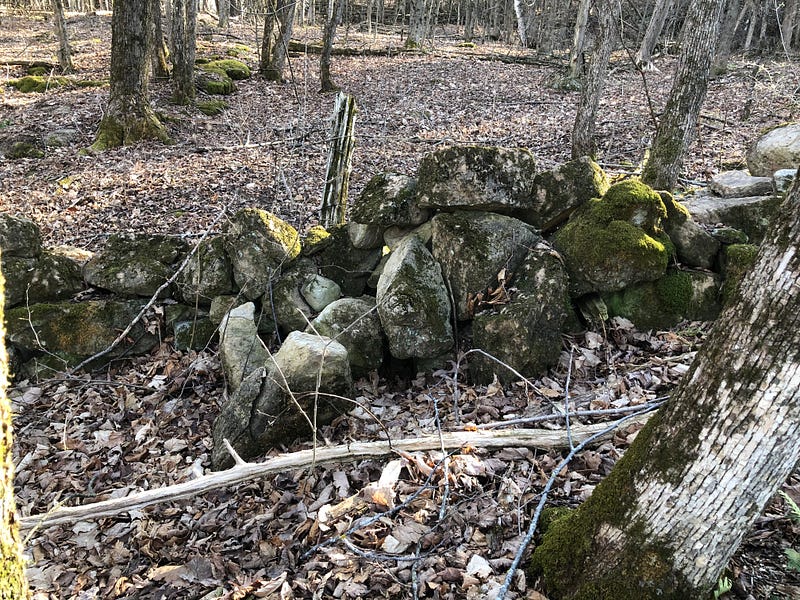
My thanks to Vermont outdoor enthusiast Ed Lalonde, who not only suggested I take a look at Eagle Mountain, he also suggested I go back to check out an older trail once I’d started to find bigger things. In one grand tradition of exploration, I made my finds thanks to getting slightly lost a couple of times. My apologies for accidentally going off-trail when I did. If you visit Eagle Mountain, please respect the area and stay on the trail.
This could be an ancient, sacred space as well as a natural conservation area, which also demands approaching the area with respect, even reverence. Please take only pictures and video, and leave the mountain as you find it, if you follow up on reading this piece and head to Eagle Mountain to see for yourself.
The Work
It appears this entire small mountain, Eagle Mountain, in Milton, Vermont, and its surrounding landscape were altered and shaped by human hands, creating a terraced and tiered landscape outlined with effigy features from the shoreline to the summit, giving it an appearance akin to a stepped pyramid with sweeping sides, oriented to the northwest.
The effigy work is serpentine, the terrace edges wrought into lengths of curling, half-buried serpent skin and scale. The front ridge sides seem armored like the sides of the great serpent. As these ridges descend, these features, repeated on each level in different rock, grow in size. On the sides and around the mountain we find the same, repeated, Possible Large-Scale Great Serpent Stone Work as I’ve discovered elsewhere, only this time rendered on an enormous scale.
Figuring out when this work is from and what it means could substantially change our views of the culture and capabilities of the ancient ancestor peoples of Northeast North America.
***
A Maritime Ice Age Culture
As first discovered at Raven Ridge last summer, the more complex of the Possible Large-Scale Great Serpent Stone Work found seems to occur at height, for the most part. More traditional ancient Ceremonial Stone Landscape work occurs at a lower height, though their zones often intersect, and the CSL work is often built over, or even incorporates, the lowest-height Possible Large-Scale Great Serpent Stone Work — suggesting the Possible Large-Scale Great Serpent Stone Work is the older work.
(You can read about that original Raven Ridge discovery here: Serpent of Dreams— back when I thought this was only happening in one location).
The height of the possible works, their design, and their subject matter, suggest they could date back over 10,000 years ago to when these heights were on the shoreline of glacial Lake Vermont and the Champlain Sea, towards the end of the last Ice Age. As the Laurentian Ice Sheet receded and melted, the Earth’s crust, which had been pushed down by the weight of the ice, began to rise. This is known as isostatic rebound. Places in Vermont once at sea level during the ice age are now at 100, 400, even 600 feet above.
The Sea was much larger than the lake, as well. By way of illustration, archaeologists have found remains of Paleoindian encampments from at least 9300 B.C. in the Burlington, Vermont suburbs. Though now a few miles from Lake Champlain, these camps would have once sat on the shore of the larger Champlain Sea. Burlington itself would have been mostly underwater.
The Possible Large-Scale Great Serpent Stone Work is also in a more realistic style than the more abstract Ceremonial Stone Landscape work, which may signal a shift from a maritime culture to a land-based society, as the more abstract work appears more in tune with natural features and less imposed upon them.
There seems to be a gap in time between their constructions. This “gap” may have been caused by the draining of the Champlain Sea and its conversion to fresh-water Lake Champlain, as there was a sort of dead zone around the lake for a while as this occurred, around 8000 B.C. This change seems to have occurred very quickly. The lake’s water level receded below where it is today, and it took hundreds of years for new wetlands to develop around its shores.
Any seagoing, maritime-based culture would have been severely impacted. Some likely followed their oceanic game north and out to the Atlantic, while others may have retreated further inland, until the lake came back to life.
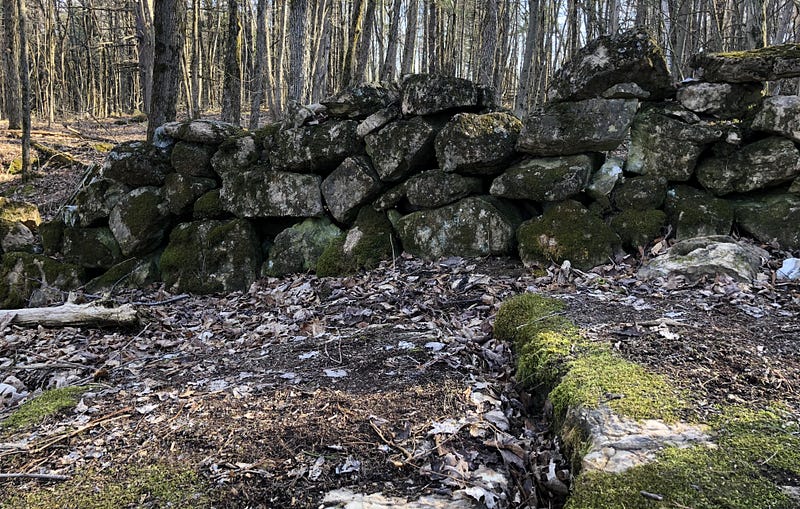
Upon returning hundreds, maybe thousands of years later, they would have found the works of the ancestors had risen closer to the sky, thanks to the effects of isostatic rebound. This alone could have inspired reverence and awe, and resulted in the construction of new Ceremonial Stone Works around and over the lower parts of the ancestor work — though I say “new”, we’re still speaking of a period beginning around 6000 years ago.
And this is still an untested theory.
***
No Stones
Unlike early populations in the rest of the world, archaeologists studying northeastern North America have usually been reluctant to grant that indigenous populations here worked with stone. That’s actually putting it mildly. Many are militantly against the idea, declaring without merit, in sweeping generalizations, that the stone work here is all Colonial or later construction, or is simply geology being over-imaginatively interpreted.
These seem to me to be culturally prejudiced and outdated Eurocentric notions, not supported by the facts as currently known. As with too many scientific disciplines studying the history and geology of this area, archaeology was misinformed by the myth of a pristine wilderness untouched by human hands for centuries — now a known falsehood. Millions of people ranged over this land over the course of more than 10,000 years.

We know they shaped and tended the land using controlled fire. Stone rows could have aided in this as firebreaks. We don’t know much about how they controlled water, yet I and other independent researchers are discovering more and more effigy rows and stone work tied into waterways. And, perhaps of import in case of both fire and water, Native American stone work across the country can be shown to follow underground water sources.
***
Ceremonial Stone Landscapes
Thus, I’m already making a claim which will annoy some archaeologists when I identify stone rows at Eagle Mountain as part of a Ceremonial Stone Landscape — the very existence of which they refuse to acknowledge. But, there are some interesting possible effigy stone rows at Eagle Mountain.
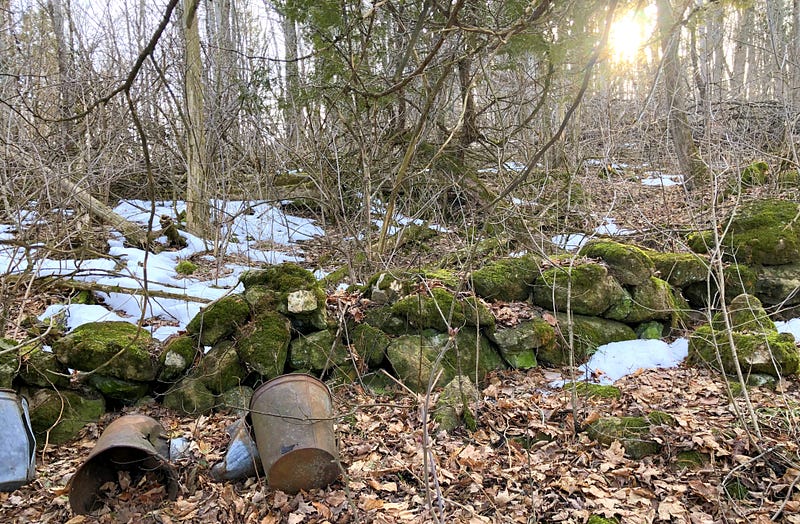
There were small farms here in the past, and some of the stone walls did look to be later construction. One stone row on the northeastern side of the mountain, however, presents several possible effigy forms.
It appears to be built in part over the remains of old Possible Large-Scale Great Serpent Stone Work. Some of the signs it could be Native American effigy row — the Serpentine way this stone row winds up and over these small ridges; the rounded, more organic forms of construction, as opposed to the more even courses of colonial stonemasons; the periodic, large assemblages along its length, and at its end, incorporating larger stones which suggest serpent heads; and the way it’s often built on and incorporates exposed bedrock.
There are a few places where this stone row sort of overlaps itself, creating the opportunity for two radial designs, possibly serpent heads, to meet.

One section of this stone row ends atop a ledge. It picks up again a short ways on, after the hiking path, and continues over to the next major ridge.
A stone row on the South side is more degraded, but still appears to feature possible effigy work.
There are five stone piles on the summit, so this may yet be a sacred space to modern Abenaki. I try to tread carefully.
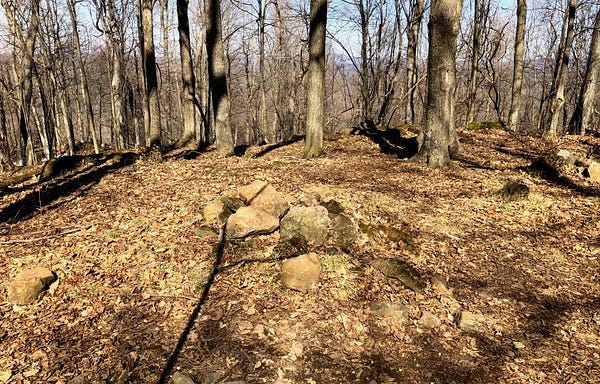
The likely effigy rows and the stone piles, as potential Ceremonial Stone Landscape elements, speak to the possibility this small mountain was a sacred space for Native Americans in the distant past. The many northern white Cedars on the bluffs also add to that likelihood, as the Cedar can also be considered sacred by some Native Americans.
***
From the Top on Down
The way some of the newer trails at Eagle Mountain are cut, I didn’t see much more than the stone rows and stone piles from the parking area on up to the top of the Summit trail. That all changed on my way back down.
After taking in the stone piles, I noticed the entire top of the mountain was curiously shaped, almost squared off in spots, and appeared to be oriented to the northwest. There seemed to be possible summer solstice sunset and equinox sunset alignments, as well as other potential astronomical alignments.
Unfortunately, I couldn’t study the alignments for long as I heard the awkward too loud first date conversation of a couple coming up the trail, and knew I had to politely move on. Heading off the summit on what I thought was a trail, I descended the northwestern side.
Looking off to the North, the mountain side sloped off and down in a way that struck me as deliberate — kind of smoothed, or even wavy.
My way down grew much more challenging, and I realized I’d lost the actual trail.
Then, looking back up at the summit, I was stunned to see Possible Large-Scale Great Serpent Stone Work towering above me! The same styles and patterns I’ve seen at other sites — with boulders positioned as wings and fins of the great serpent — boulders perched in place.
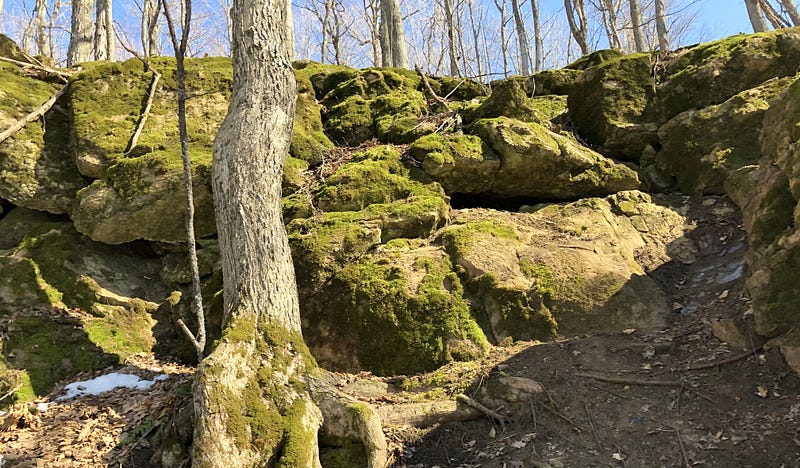
Knew I was going to have to take a look at the LIDAR when I got home!
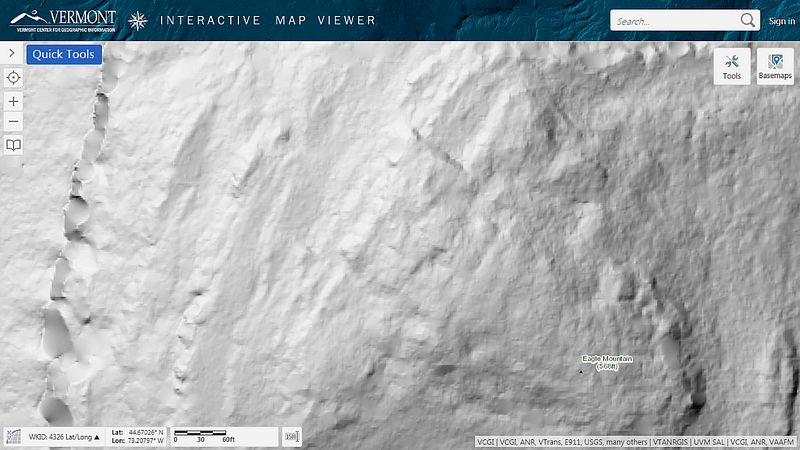
Made my way South around the summit to find the trail and instead found some amazing things. The summit appeared to be worked into tiers and terraces. The rock surface is often given a reptilian appearance. Coming around the Southwest of the summit, the entire slope seemed worked and added to, to give it a Serpentine appearance.
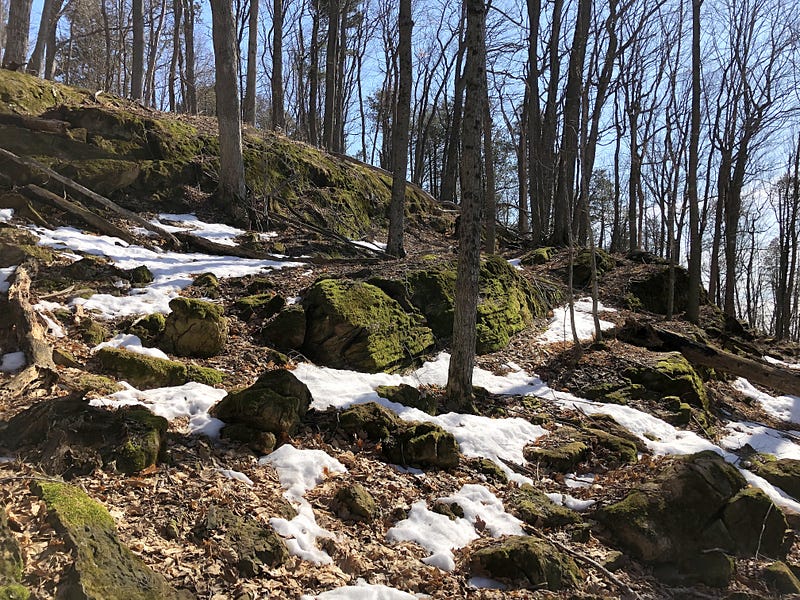
There were curiously shaped stones and perched boulders all along this first major terrace down from the summit above. I drew closer to the side of the ledge up to look at the details.
This is where it began to feel like I’d stumbled on to something big. It appeared the Ridge around me had been shaped into possible great serpent stonework on a larger scale than I’d seen before.
Boulders were deliberately perched, turned sideways to the ledge, almost like the gills or armor of the great serpent. The stones were taller than I was. And big as those stones were, what I didn’t know at the time was that I would find stones of similar design to these — in larger and larger form — down on each terrace on this corner of the mountain!
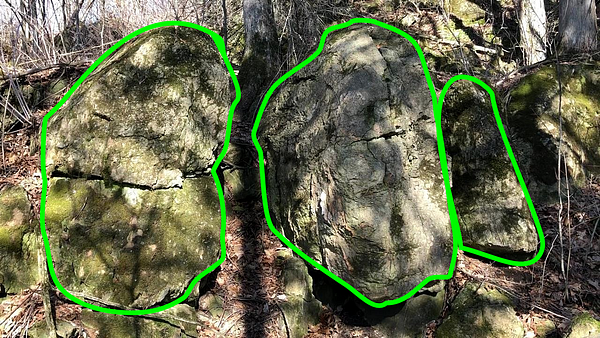
Finally spotted the trail below and made my way towards it, discovering a small balcony-like space on the way down, with what appeared to be stones sculpted into wings and other forms arrayed along the top.
The trail led out to the overlook they call Hoyt’s Lookout, in honor of John and Peggy Hoyt who donated almost half the land here. There’s a pretty sweet view of Lake Champlain and its small islands — from left to right: Lower Fish Bladder, Upper Fish Bladder, and Savage Island. South Hero lays behind them.
Turned around at the Lookout and looked back up towards the summit, marveling at how tiered and terraced it appeared. Wandering along these lower tiers, I found many fin and wing stones perched in place.
A check just over the edge of the Lookout showed that the next terrace down wasn’t that far below. Ed said that I should really see what the cliffs look like, and told me to look for an old trail West of the Lookout. West meant down. Near the Lookout, I thought I saw the old trail below, and headed down.
What I thought was the old trail, however, didn’t last.
As I looked around to find my way, I saw that the cliffs behind me, again, looked like they had actually been worked. The Possible Large-Scale Great Serpent Stone Work — here even larger than above, megalithic even! There was again, too, the repetition of the aquatic armor represented by boulders perched in place nearly perpendicular to the cliff face.
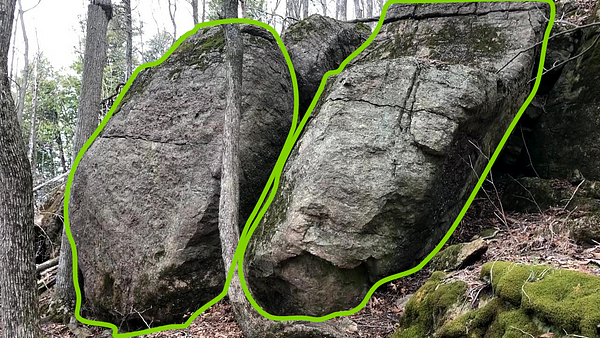
There are consistent methods employed. The builders seem to break off a piece of ledge and then turn it to stand perched like a gill or armor, or lay it down and perch it like a fin.
No trail yet in sight, I made my way to the next terrace down. Yep. More Possible Large-Scale Great Serpent Stone Work, here even larger, still. I was shaking my head as I drew close.
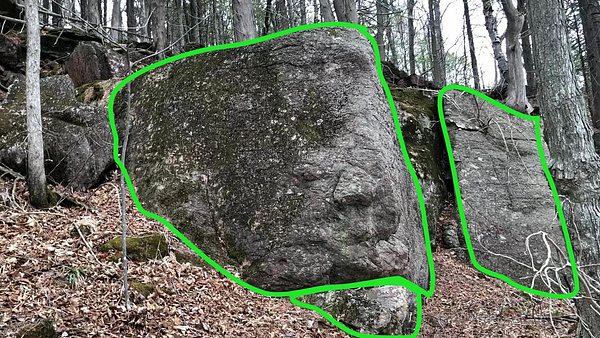
Would anyone else believe what I was seeing?
I wasn’t sure. I’m still not… but that’s up to you, really.
These stones were huge. They towered over me, maybe 16 feet high. One perched boulder on this level had a protrusion which looked a lot like a nose over a frowning crack for a possible mouth.
Further back along the ridge, the way this ledge was worked blew my mind. These were over 20 feet tall, and at first looked like four pillars in a row.

But these four are really only three separate pieces when looked at closely. The middle two still seem to be part of the bedrock ledge, with a line pecked out across the bottom to make it appear as if they were separated. The other two pillars seem broken off and perched.
A curious shaped gap on the base of the fifth pillar shows potential human manipulation. The lower part on the left is bedrock ledge, the right part is added stone.
There could be a geological explanation for this sort of cracking occurring naturally. Geologists say when the nearby Champlain Thrust Fault was formed, some portions of rock were pushed faster than others. This caused fractures in the rock approximately perpendicular to the line of the fault. Fractures such as these may have been responsible for forming these lines of cliffs. It seems to me this fracturing did play a role, which was then accelerated, altered and accented by human hands.
But that doesn’t really explain the Possible Large-Scale Great Serpent Stone Work. Making my way from the pillars across the terrace, I ran into a potential Whisker form — Possible Large-Scale Great Serpent Stone Work on a grand scale — boulders mounted on bedrock to create bumps and giant points, spreading out over the terrace. The points were impressive on close inspection, and seemed to show signs of human handiwork, including what appeared to be even finer surface work.

The next terrace down was a steep drop, though I then managed to finally find the old trail Ed had mentioned, right on top of the big cliff on the Western side of Eagle, near a sharp cut ravine down. I was near the Champlain Thrust Fault, as I noticed red and gray shale began appearing underfoot, here and there.
Looking back at the mountain, I laughed.
More Possible Large-Scale Great Serpent Stone Work — on an even larger scale? Really?
This time, huge 25 to 30 feet tall boulders seemed broken off from the ridge side bedrock and turned almost perpendicular to the ledge and perched in place, or laid down and propped and perched in place to look like a fin. Even bigger than above.
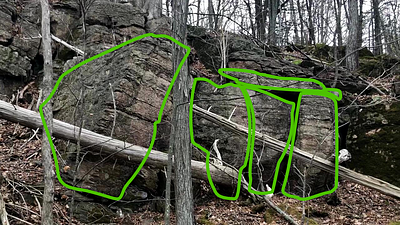
Although… down here, this was so close to natural work, I’m not sure this would have caught my eye if I hadn’t seen this stuff above. Having seen the rest? This, too, becomes convincing to me.
***

The Serpent Garden
The old trail led me off the mountain’s south side onto the Wildflower Loop. Though this area is known for colorful displays in summer, in the spring there were only the mossy ridges and ledges. And Possible Large-Scale Great Serpent Stone Work everywhere! Closer to the mountain, these are still Whisker and Feather forms. As they lead away from the mountain, the ridges themselves are turned into smaller Sea Serpents.

Looking at the LIDAR, it would not surprise me if these sorts of Serpents continued down the lakeshore into Mallet’s Bay and Niquette Bay State Park to the south. Much of this is privately held lakefront property, however, so I won’t be checking this theory out in person any time soon. As Arms Forest and Lone Rock Point are then further south of Mallet’s Bay on the shore, it appears there are likely more Sea Serpents between them as well.
In the days of the Champlain Sea, the ocean might have washed in among these ledges at high tide, creating the impression of Sea Serpents wallowing in the briny froth at the base of the Great Serpent, rising up out of the depths.

Walking among the Possible Large-Scale Great Serpent Stone Work and Sea Serpents, on the Wildflower Loop — and Mossy Ledge Trail — I could imagine the impact these ridges had on those approaching by boat, as they appeared to be great beasts lurking on the sea.
***
The Serpent Embankment
For a time, the Hoyt Lookout Trail runs north alongside this apparent effigy row on its Eastern loop heading up towards the main parking area. On close inspection, this construct reveals itself as more of an embankment than a stone row or wall, unless the earth has filled in behind it over time. But that doesn’t appear to be the case.
That’s its function. As for form, given the many fins built in along its sinuous length, it seems to be the tentacle for a large Whisker Form which begins south of it at the trail intersection and continues to run further south beside the easternmost leg of the Wildflower Loop. This tentacle would connect it back up to the main “body” near the summit.
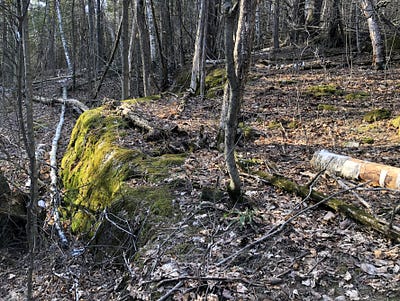
At a distance, this could appear to be simple erosion at work. However, once again closer inspection reveals that simplicity to be deceptive — this is a complex construction. Deliberate. And consistent in design and form with the rest of the Possible Large-Scale Great Serpent Stone Work.
***
Hiram Who?
These finds have obviously given me much to think about, even to the point of wondering if they were any kind of find at all. I made a special return trip to the mountain to see this stuff again, just to be sure it was really there. It was.
On that beautiful, sunny day, I felt somehow much in tune with this place, and the mountain revealed a little lookout right off the old trail. Spent some time sitting there watching the local turkey vultures put on a majestic aerial display.
Afterwards, Ed told me I’d found “the real Lookout.” How about that.
If these finds bear up over time, our ideas about the cultures and behaviors of the ancient northeastern ancestors of Native Americans will have to change, as they would seem to have worked in stone as the Mayans did, or the Olmecs — or the Incas. This line of thinking is what led me to thoughts of Machu Picchu — and wondering who’d discovered it. Hello, Hiram Bingham the Third.
At the moment, we’re a long way from Machu Picchu. This is my preliminary presentation. As a journalist, an author, and researcher, when I make a discovery, I write about what I find. And make YouTube videos— you can find the accompany video presentation to this feature at: https://youtu.be/X9qMIvbC3s0.
This is only the beginning, the opening question — “Do you see this, too?”
In time, if Eagle Mountain can be recognized for what it quite possibly is, I have no problem sliding into obscurity alongside ol’ Hiram. I’m not looking for fame nor fortune, but to put the mountain in the spotlight.
In fact, it’s been difficult for me to put this presentation together. I knew it would be, as I walked around and saw this stuff. How do you describe what seems incredible? I didn’t ask to see this Possible Large Scale Great Serpent Stone Work, or expect to, or even hope to! I’m open to it — obviously — but I’m also well aware some will find this all ridiculous and delusional.
So be it.
Those who can see will see it.
Those who cannot see, will not.
There is nothing I can do to change that; all I can do is share what I see.





